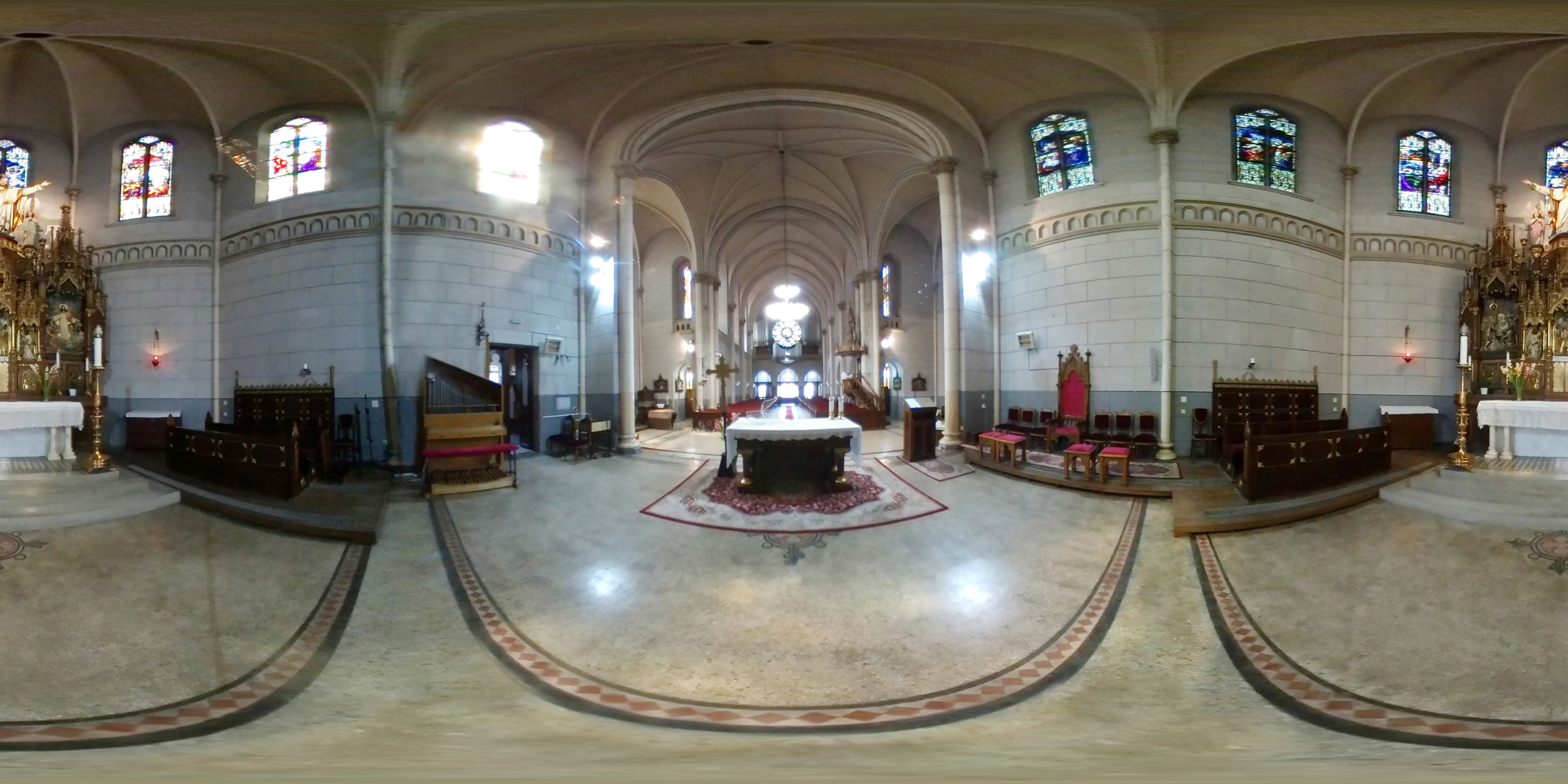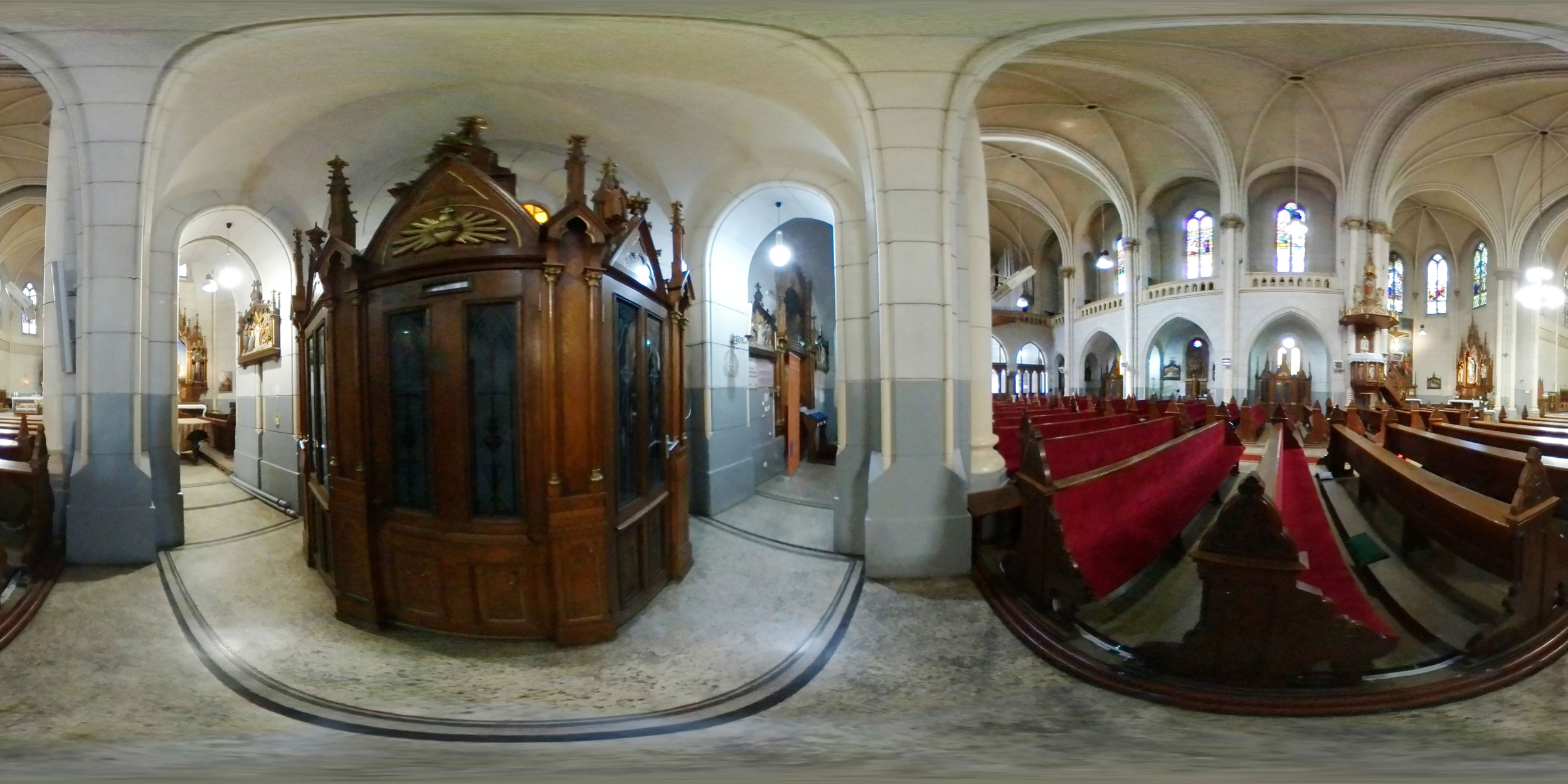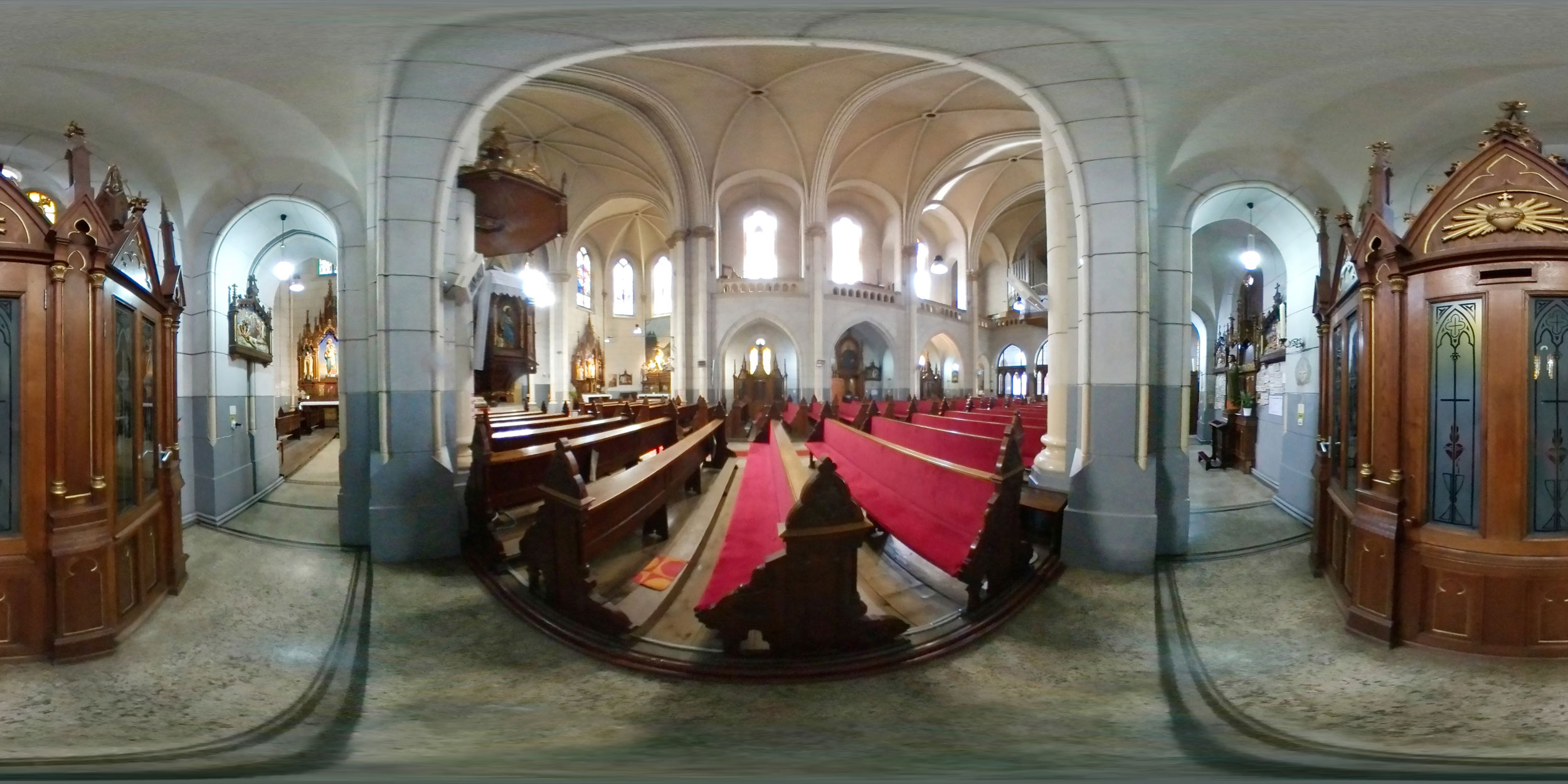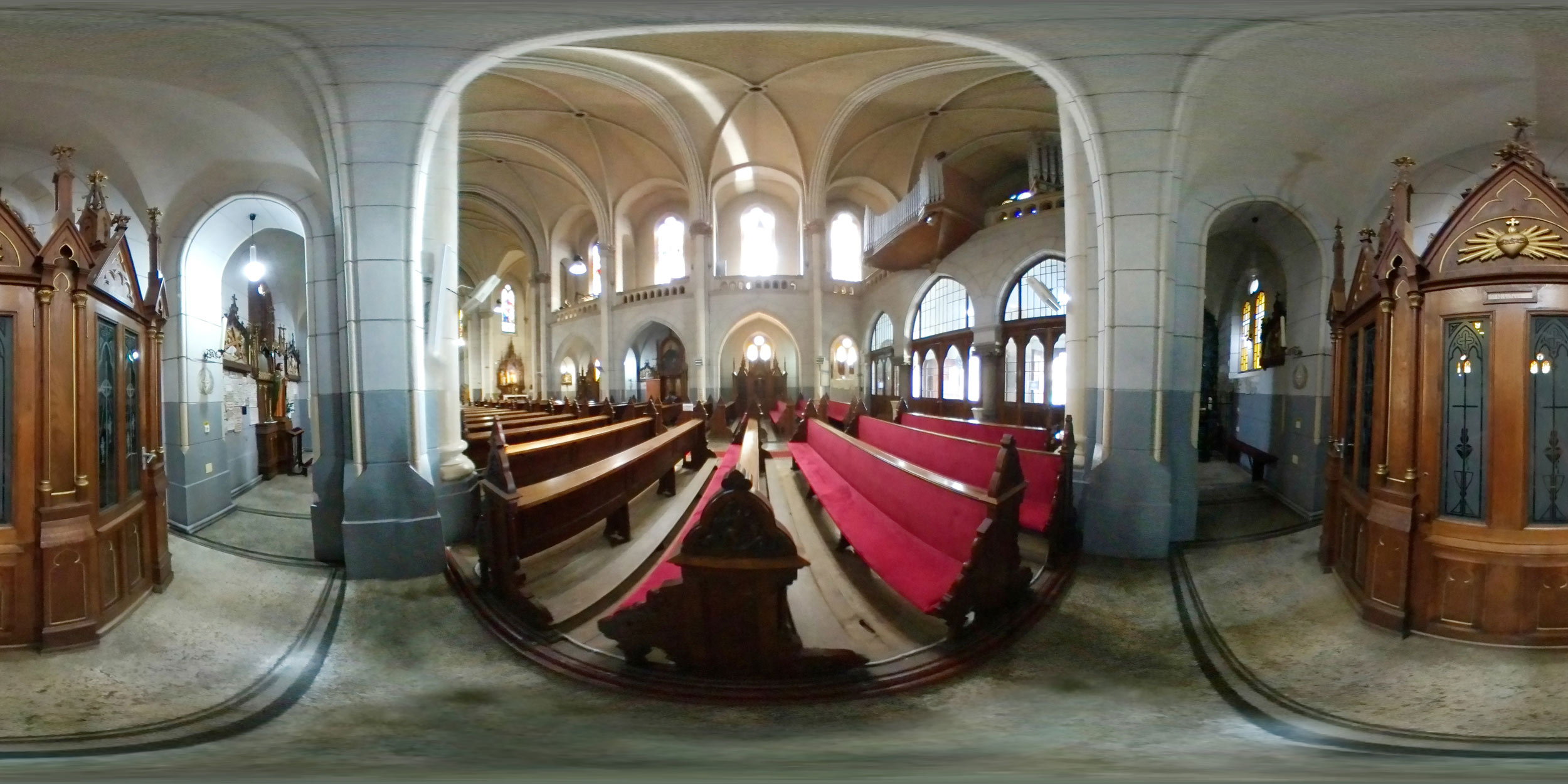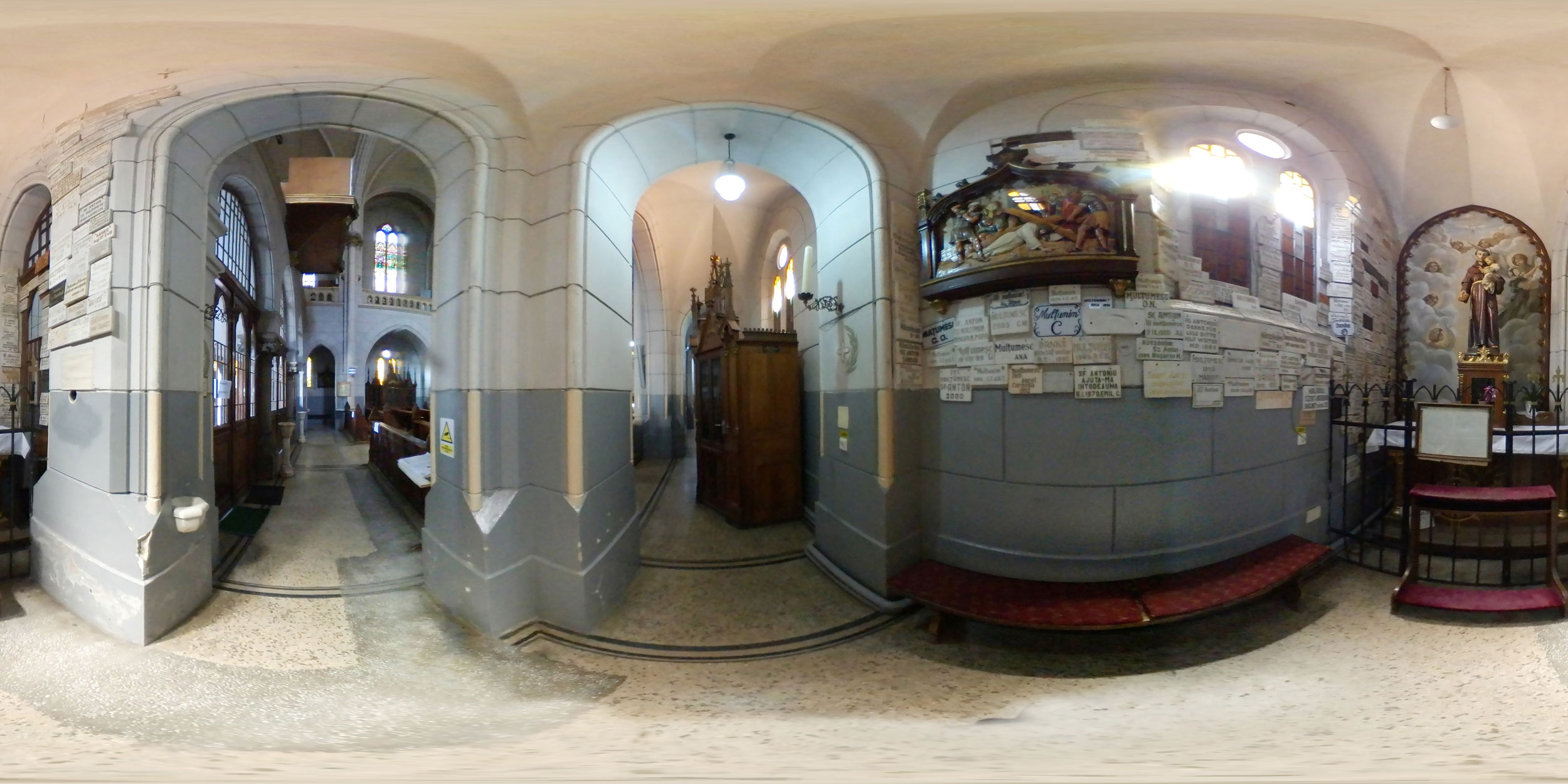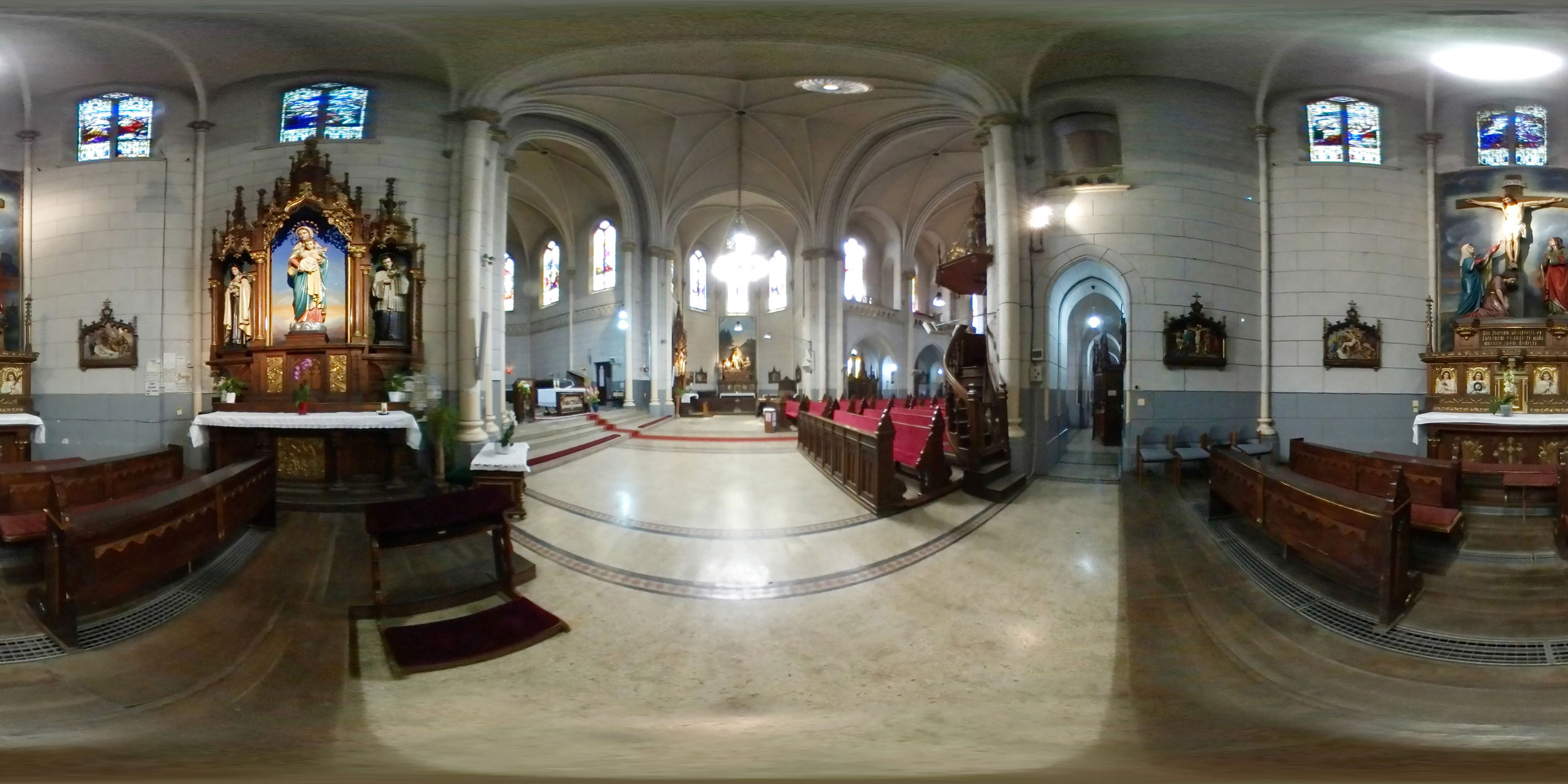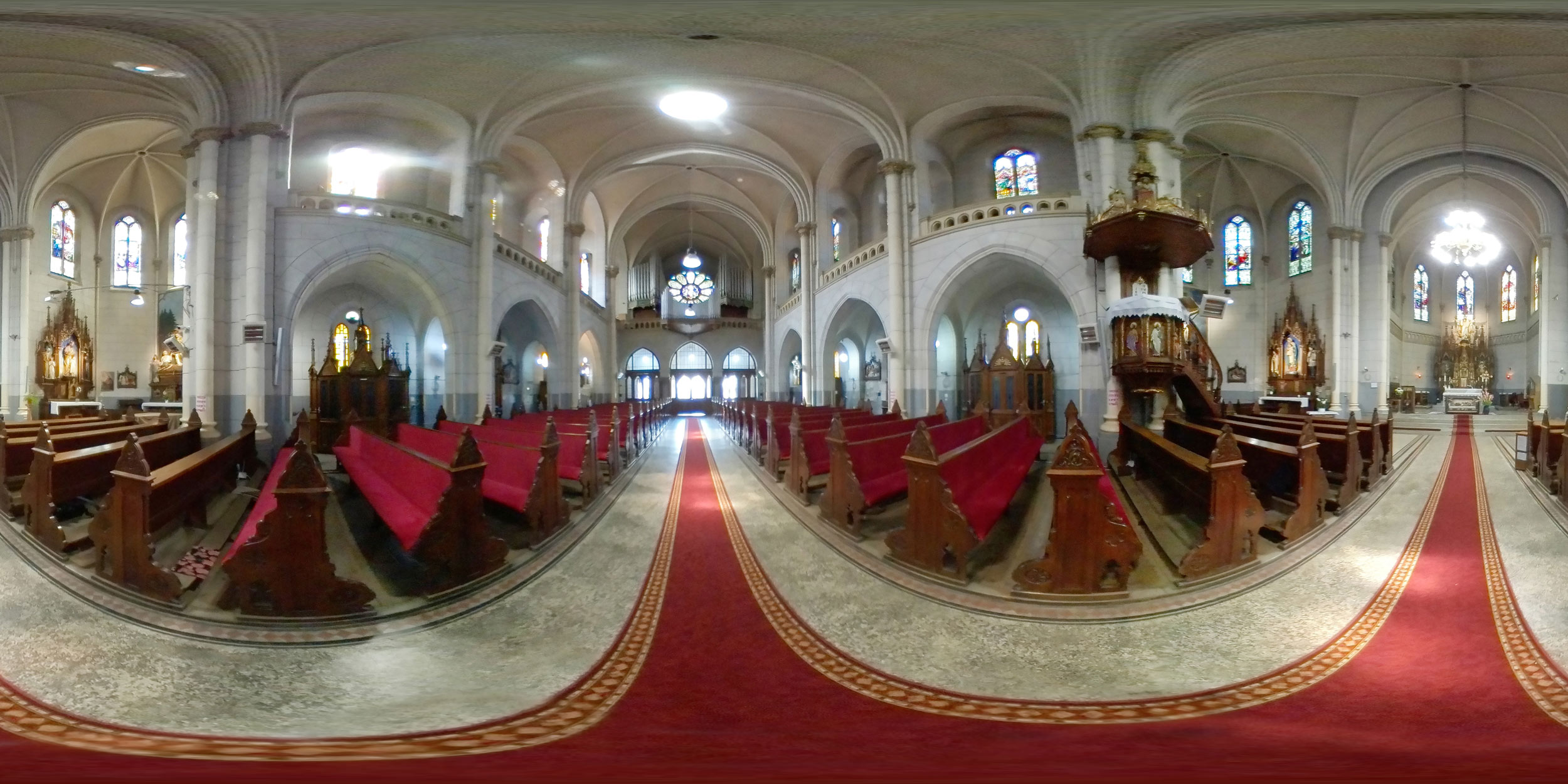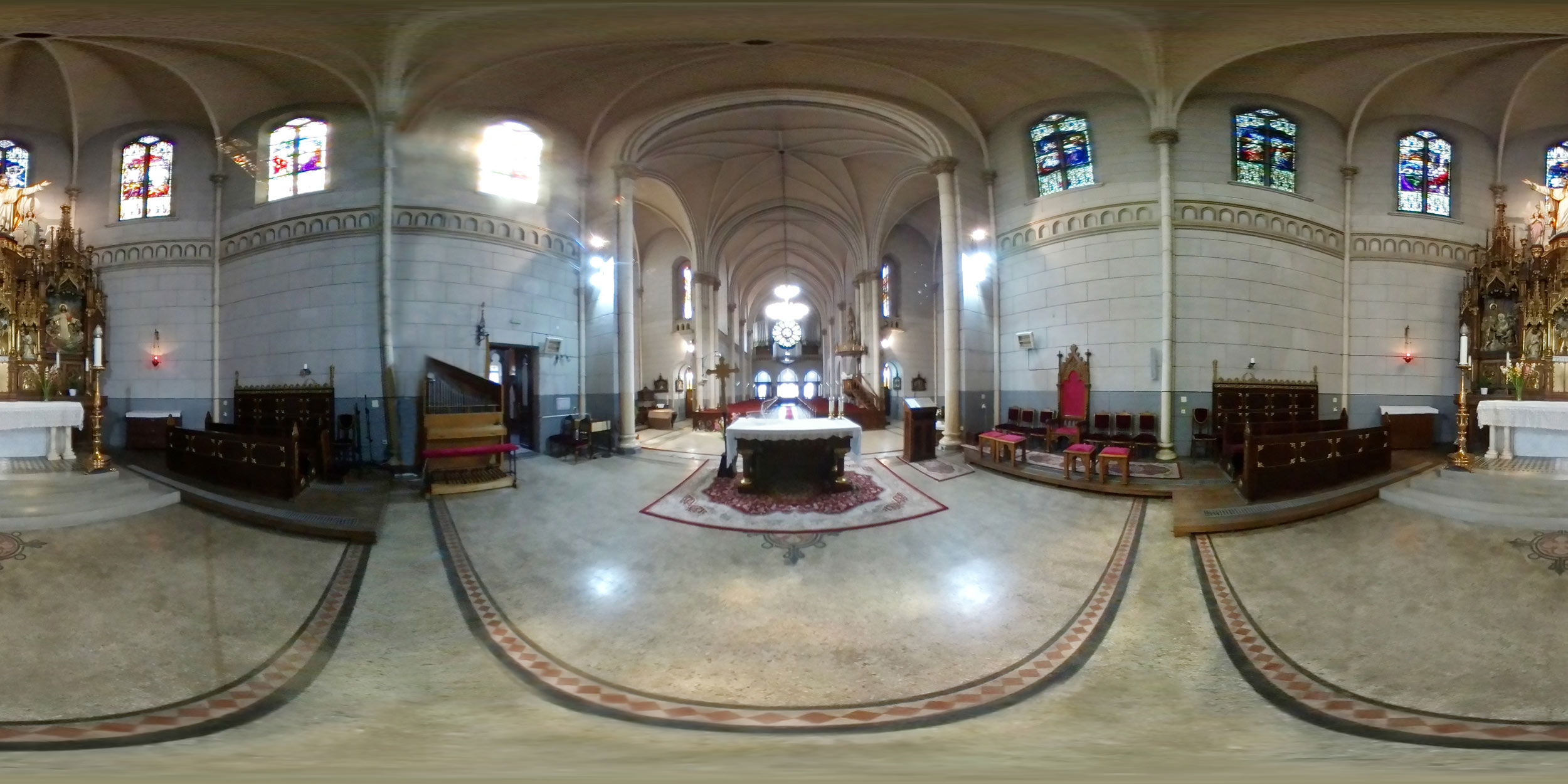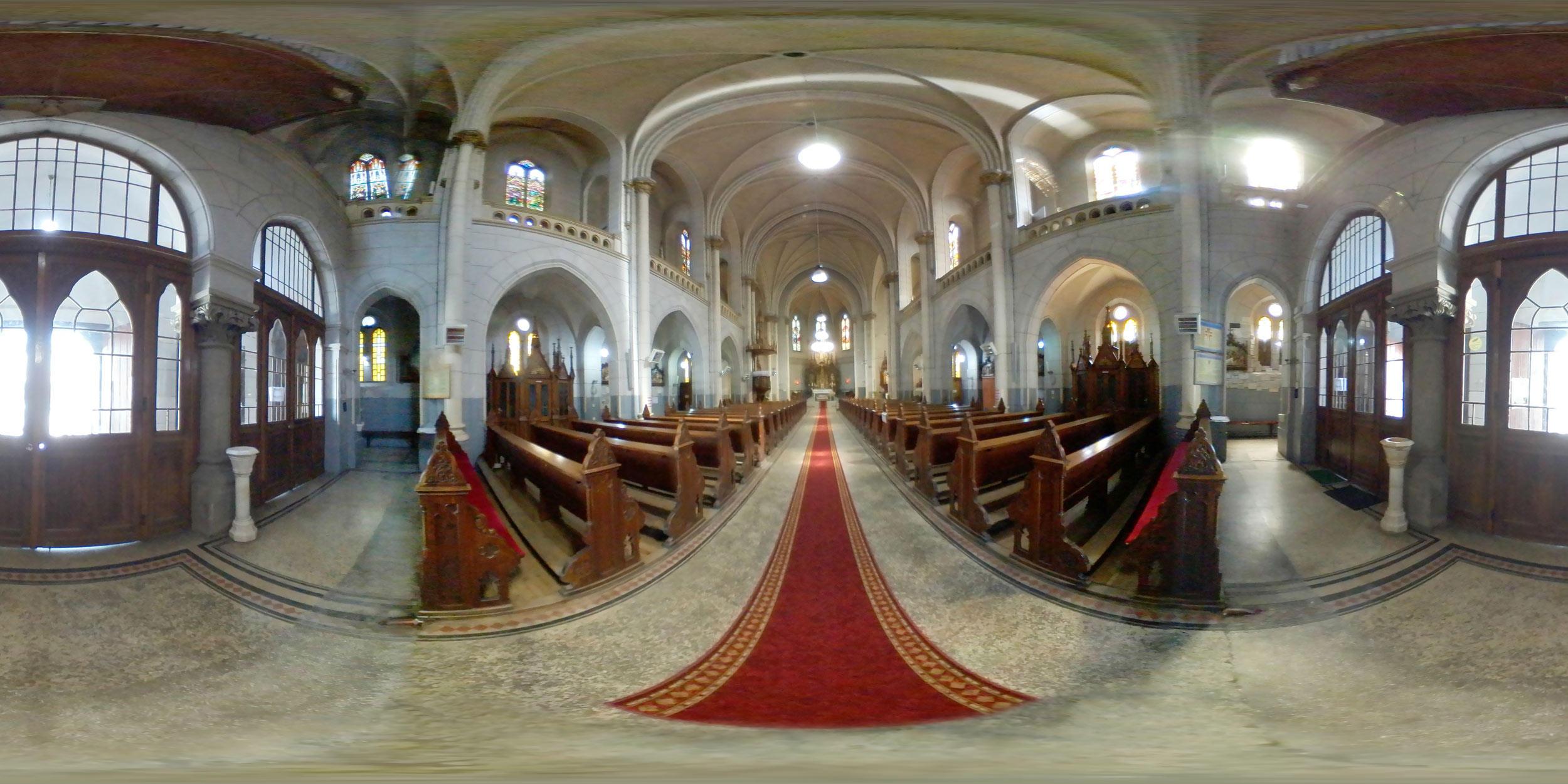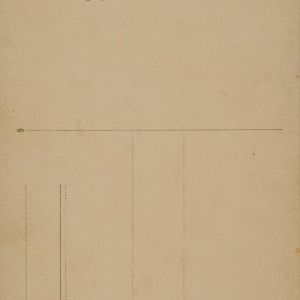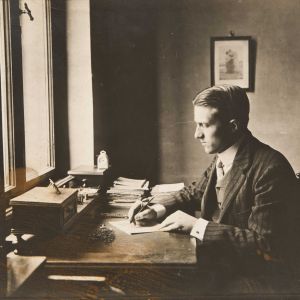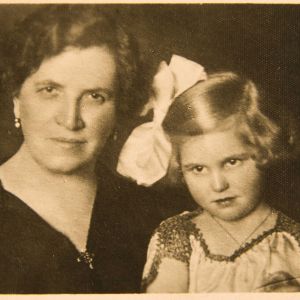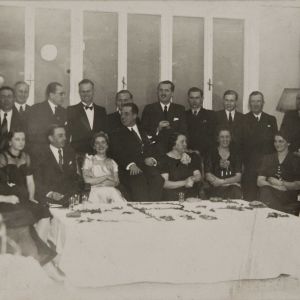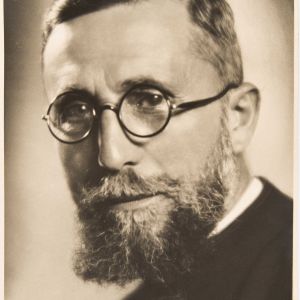1 December 1918 Street no. 1 / Balcescu Square
"The Roman Catholic Church of the Most Sacred Heart of Jesus awards a central aspect to the square in front of it, the present
N. Balcescu Square, formerly known as Lahovary Square. In the immediate vicinity of the church, the Salvatorian Monastery from Elisabetin neighbourhood was built in the interwar years."
Listen to the audio version.
The Roman Catholic Church of the Sacred Heart of Jesus, with its slender towers, visible from a great distance, gives a central aspect to the current market in front of it, which is known today as N. Bălcescu Square and in the past as Lahovary square.
In 1902, for the construction of the Roman Catholic church in Elisabetin, a piece of land was bought in the Grundhaus square (today N. Bălcescu) from George Buresch and an Association was set up to raise funds. Built in eclectic style with neo-Gothicinfluences, with a capacity of 2000 seats, the church was designed by the architect Károly Salkovits, from Budapest, who also took over the management of the site. The foundation of the church was laid in 1912, and the construction work was executed by Albert Schmidt and János Bagyánszky, so that on 31 August 1913 the crosses were consecrated by Bishop Dr Julius Glattfelder and fixed on the towers. Although the church could have been completed and put into use by the end of the year 1914, due to the outbreak of the war, many workers were mobilized on the front, and the entrepreneurs were unable to comply with their contractual obligations. However, thanks to the efforts of the Association established in 1902 for the construction of the church, animated by the entrepreneurial spirit and funds of the bank director Aladár Kudelich and school principal Joszef Wittenberger, the work was resumed by immediately after the end of the war, and the church was consecrated on August 17, 1919. The five altars of the church were painted by the artist Ferdinand Stuflesser from South Tyrol.
From an architectural point of view, the church is built in the eclectic style with neo-Gothic influences. Among the neo-Gothic elements we can observe: the shape of the gaps - broken arch, the decorative rosette above the entrance, gargoyles, a decorative turret from the east and the branched veins on the inner vault.
The Roman Catholic parish in Bălcescu Square, like the one in Mehala, was still there from the beginning and served by the order of The Salvatorian monks. The first representatives of the monastic order arrived in Timișoara in 1898, at the call of the Roman Catholic bishop J. Glattfelder, functioning in the suburbs of Mehala.
The Salvatorian Monastery, built in the immediate vicinity of the church, was completed in 1926, being closed during the communist regime. Nowadays the monastery has a subordinate center for homeless children and a night asylum for the people in need.
Bibliography:
- Josef Geml, Vechea Timișoară în ultima jumătate de secol 1870-1920, Cosmopolitan Art Publishing House, Timișoara, 2016, p. 110.
- Deselega Gyula, Ghidul Timișoarei, Fundația Diaspora, Timișoara, 2011, p. 177.
- http://www.plecatdeacasa.net/2013/10/manastirea-catolica-ordinului.html site accessed on March 15, 2020 .
- https://heritageoftimisoara.ro/cladiri/Elisabetin/adresa/1+Decembrie+1918/1 - accessed on 16 March 2020.
Listen to the audio version.
Pia Brînzeu, Family Journal, Manuscript
Station 6 Roman Catholic Church "The Most Sacred Heart of Jesus"
May 20, 1957 It’s Sunday. Mother urges me to hurry up. “We’ll be late”, she tells me worried, although the Notre Damechurch, where we are supposed to arrive in half an hour, is not far. I’m afraid she’s right. My first communion dress is fastened with buttons at the back and I cannot do that alone. I can’t even attach my veil without help.
It’s such a beautiful Sunday! Inside the church, the strong scent of lilies of the valley and lilac in bloom delicately enters my nostrils, like the fragrance of a real spring, completely different from spring in the next millennium, which will often present itself with hurricanes and 35 degrees temperatures – in fact, no longer a spring. I breathe in deeply a few times so that the delicate smell can reach my brain or, maybe, my heart, and start there an unknown alchemy, melting the moment’s emotions in the larger joy of passing from childhood to adolescence.
The attending parents and grandparents are dressed elegantly. The women are wearing hats and matching gloves, and the men are wearing their good Sunday suits. The shoes seem new, although they were bought many years ago, maybe even before the war, but they are only worn on important occasions. Unlike those that are worn on smaller occasions or are used daily, the good shoes clock years and slowly go out of fashion, but they don’t crease and remain new-looking and elegant for much longer.
I look around: the serenity in the eyes of the grown-ups does not betray the sufferings they all went through. However, in their thoughts, in their sad smiles, in some random, unintentional sigh, are conjured up and join us those who were lost in the war, those who got arrested afterwards, and those who went to seek their fortune in the great world, among strangers.
The veil-wearing little girls, the little brides of Jesus, are somehow rehearsing their big wedding, but it’s a rehearsal of innocent femininity, devoid of sexuality. The boys, in their dark suits, also take part in this religious ritual which, surprisingly, still exists in our recently turned Communist world. We feel that this ritual erases the separation line between the sacred and the profane: we are initiated into the mysteries of Catholicism and will afterwards be allowed to confess and take the Holy Communion but, at the same time, we know we are also engaging in a political act that distances us from those enslaved to power. “It’s so good they are not here. Their lost hearts are so poor”, the clear eyes of the nuns responsible for the smooth running of the event seem to be saying.
Together with the Hacichians, whose son, George, also took part in his first communion, we are invited to Mrs. Lotte Holzer’s, the widow of Dr. Motorescu, a renowned dentist from Timişoara. The typically festive fare is on the menu: chicken soup with very fine noodles, Wiener schnitzel with blueberry jam and mashed potatoes, and the Dobosh torte is the traditional dessert. The host will give me a white prayer book, which I will never use. It’s too new to replace my used book, worn out during my religion classes and very dear to me for that reason. Still, I kept it for a long time and every time I looked at it I tried to understand Mrs. Lotte’s destiny: the daughter of rich Germans, she married a Romanian man so as not to get deported. She remarried, to Ionel Maier, a tenor at the Opera, and then emigrated to Germany, where she worked as a dentist, although her only diploma was the experience gained as her first husband’s nurse. When the authorities discovered the fraud, she killed herself. My mother’s other colleague, Mrs. Hacichian, was also widowed and, since she didn’t have an education, she ended up washing bottles in the dirty and cold water from the basement of the “Dermatina” factory.
When I entered fifth grade, I began to play chess and instead of going to church I went to competitions on Sunday. But I always felt the need to pray before going to bed, repeating the same four stanza German prayer which I used to say in my childhood and which I recently found in one of Herta Müller’s books. Just like a monotonous mantra, it helps me to calm down and to serenely pass, while sleeping, into the occult nether world of the unembodied spirits. But to get me the Nobel Prize, as it did to Herta, I’m sure that the rhythm and the intonation of the prayer need to be completely different.
Listen to the audio version.
"Although my parents left in 1976 and I was born in Germany in 1979, my family has always kept in touch with Timisoara. In 1980 I was baptised in the Catholic church in Nicolae Bălcescu Square that my grandparents still called Lahovari.
My family has a collection of landscape paintings of Timișoara, painted by the unique artist Romul Nuțiu. Among them is the picture of the Catholic church in Elisabetin.
My children, in a sort of tradition, were both baptized in 2009 and 2016 in this wonderful church.
We love Timisoara!"
Lucia
N. Balcescu Square, formerly known as Lahovary Square. In the immediate vicinity of the church, the Salvatorian Monastery from Elisabetin neighbourhood was built in the interwar years."
Elisabetin neighbourhood was and perhaps still is a very beautiful neighbourhood of old Timișoara. And it will always have a place in my heart!"
Dana Ternovits Török
